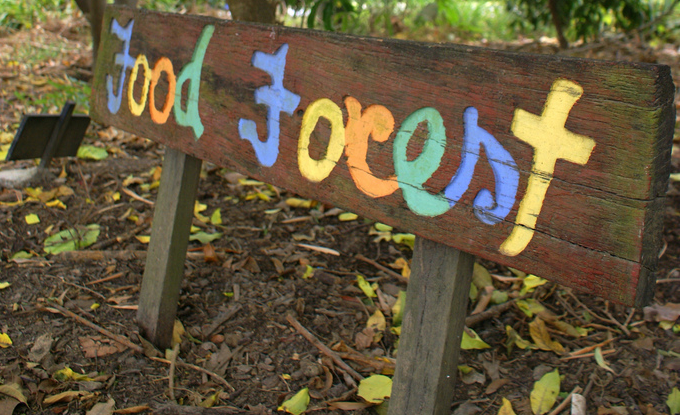- Forests are a nutritional bounty – virtual natural supermarkets for 1 billion of the world’s poorest people. In rural areas of the Congo Basin many communities depend on wild meat for up to 80 percent of the fats and proteins in their diets. The 5 million to 6 million tons of bush meat eaten annually in the Congo Basin is roughly equal to the total amount of beef produced each year in Brazil – without the accompanying need to clear forest for cattle. In areas where fish are an important source of protein, forests, especially mangroves, support the healthy aquatic ecosystems necessary to maintain fish stocks.
- Forests provide goods and services that support the agricultural sector. Livestock production benefits from the fodder and shade provided by forests and trees. Forests provide homes for the bees, bats, and other pollinators of agricultural crops. Coffee cultivated in the fields furthest away from forested areas has been shown to have lower yields due to reduced pollination services. Forests provide hydrological services to agriculture, moderating the quantity and quality of surface water available for irrigation, and controlling the sedimentation of irrigation infrastructure.
- Natural forests provide habitat for the wild relatives of many important tree crops, a source of genetic diversity that will become increasingly important for these species to adapt as climate change advances – and for humans to adapt to climate change as well. Once our diets included more than 7,000 species of plants and animals, but today the global trend towards simplification means our diet contains fewer and fewer species. This lack of biodiversity in our food sources makes us more vulnerable to the onset of new pests and diseases brought on by climate change.
- Environment-related income makes up about one-quarter of total household income for people living in or near forests.
- Despite the rush to allocate forested land to agriculture in the name of food security, the impact on total agricultural production of such conversion has been slight. While agricultural production in developing countries has increased by 3.3–3.4 percent annually over the last two decades, gross deforestation has increased agricultural area by only 0.3 percent, often on marginal lands, suggesting a minor role of forest conversion in increasing overall agricultural production. Deforestation in the Brazilian Amazon offers a stark illustration of this calculation with cattle ranchers often using a hectare of land to raise a single cow.
- Of course there are many instances in which rural households have been made better off by converting forests to agriculture. In Indonesia, many families in the Outer Islands are sending their children to college for the first time with income from smallholder oil palm production. But all too often, when communities sign over their forested land to large-scale commercial agriculture, they benefit little, despite hopes and sometimes promises of employment and other benefits, while losing access to traditional forest-based sources of income.
Copyright policy:
We want you to share Forests News content, which is licensed under Creative Commons Attribution-NonCommercial-ShareAlike 4.0 International (CC BY-NC-SA 4.0). This means you are free to redistribute our material for non-commercial purposes. All we ask is that you give Forests News appropriate credit and link to the original Forests News content, indicate if changes were made, and distribute your contributions under the same Creative Commons license. You must notify Forests News if you repost, reprint or reuse our materials by contacting forestsnews@cifor-icraf.org.
We want you to share Forests News content, which is licensed under Creative Commons Attribution-NonCommercial-ShareAlike 4.0 International (CC BY-NC-SA 4.0). This means you are free to redistribute our material for non-commercial purposes. All we ask is that you give Forests News appropriate credit and link to the original Forests News content, indicate if changes were made, and distribute your contributions under the same Creative Commons license. You must notify Forests News if you repost, reprint or reuse our materials by contacting forestsnews@cifor-icraf.org.
